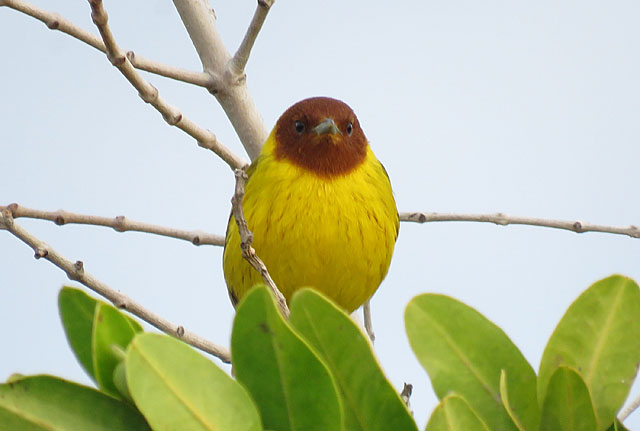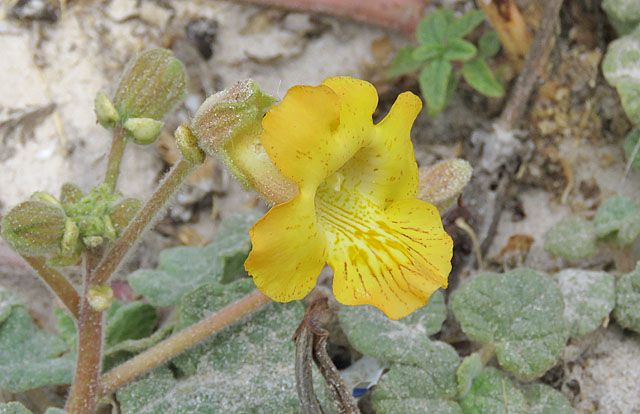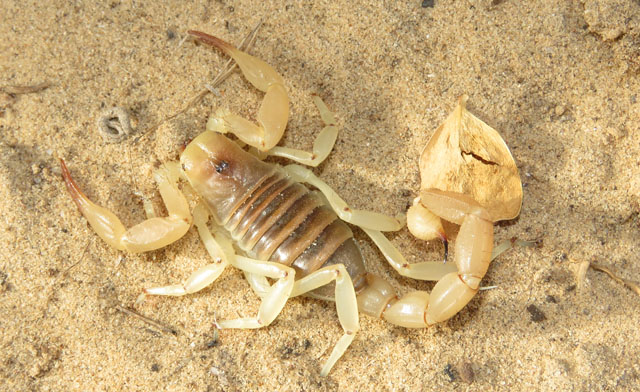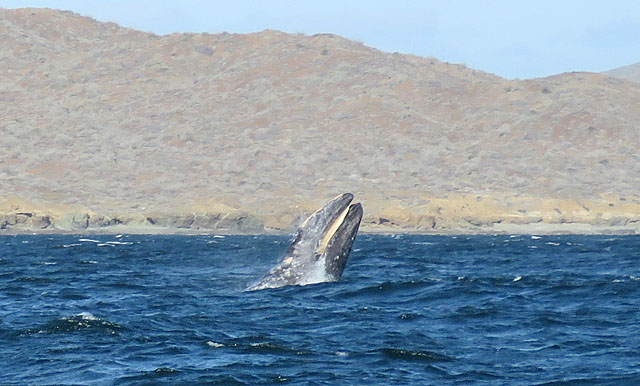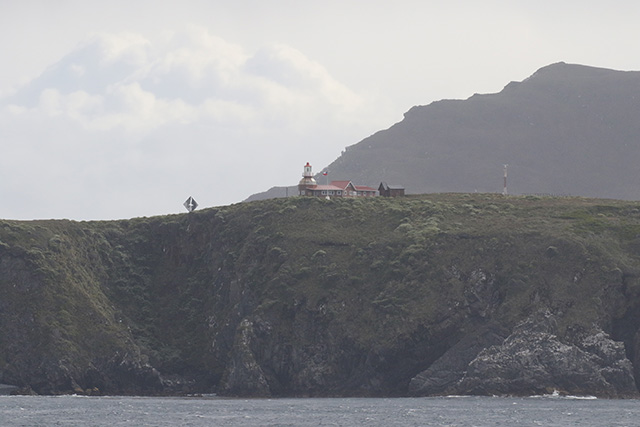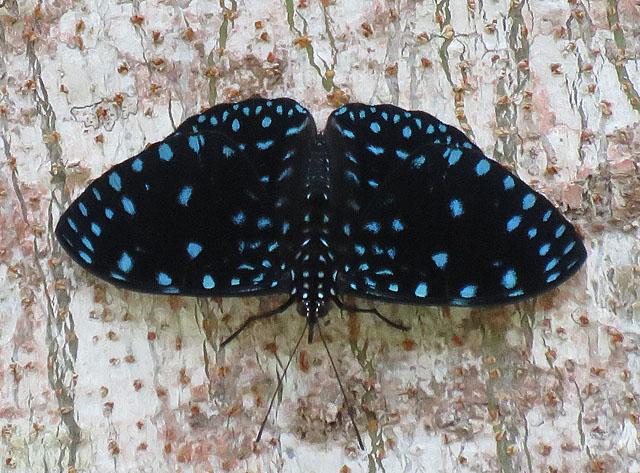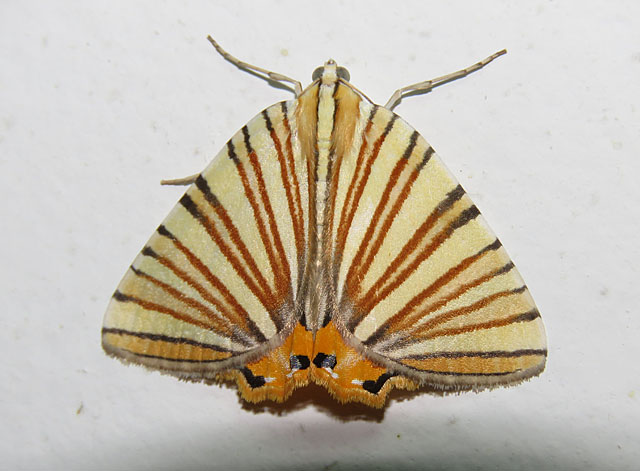From the Field
March 16:
Rich Hoyer on his just-completed tour, Jamaica
We breezed through the natural history of Jamaica this past week, seeing all endemic bird species along with many other fascinating life forms (many of them endemic too) that conspire with the unique sounds and smells, as well as the very friendly local people and delicious food, to give this island such a memorable and lovely character. We got to know a large part of the island with our scenic drives on back roads, starting on the north coast, then reaching the eastern end, over the mountains, to the southern tip, and finally a trip through the middle of the island after a most delightful stay at Marshall’s Pen.
We started the tour with a stay at a hotel with a stunning view of the Caribbean Sea below.
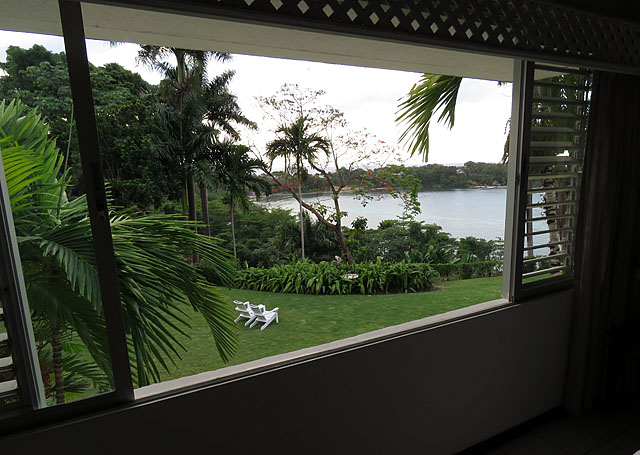
Every day had wonderful highlights, from an almost instantaneous Jamaican Owl to super confiding Jamaican Todies, amazingly close White-tailed Tropicbirds and a last-second Rufous-throated Solitaire. But one day in particular was amazing from beginning to end. We had a full morning at Marshall’s Pen, during which we watched Red-billed Streamertails fighting over the nectar-dripping flowers of the Euphorbia punicea, in peak bloom during our visit.
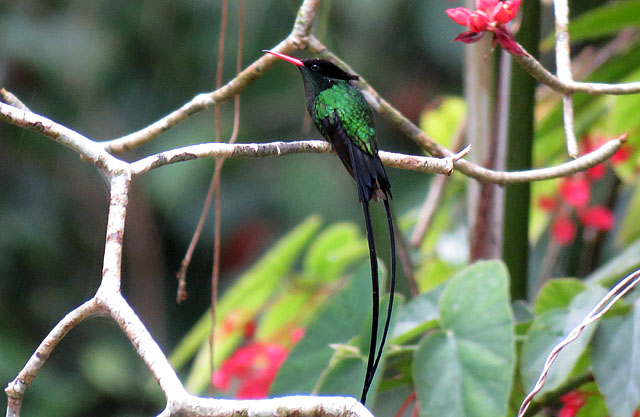
Just below the hummers was a pair of adorable Jamaican Todies, voted one of the top birds of the tour.
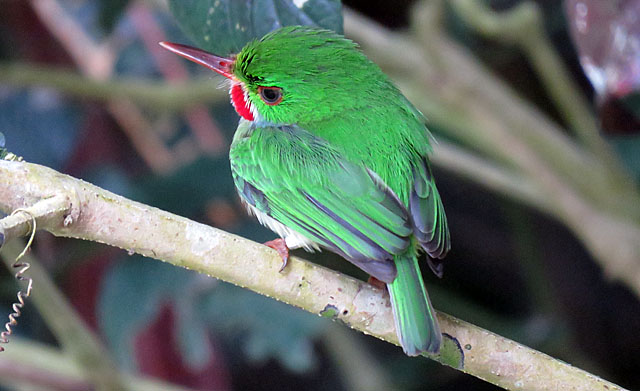
Across from them was a feeder with the orange halves impaled, visited by a pair of Jamaican Woodpeckers.
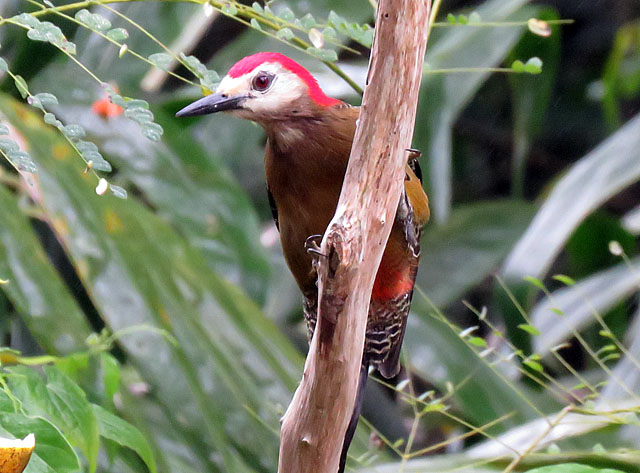
Once the woodpeckers left, an Orangequit, an endemic genus and one of the most distinctive birds in Jamaica, came down and took his fill.
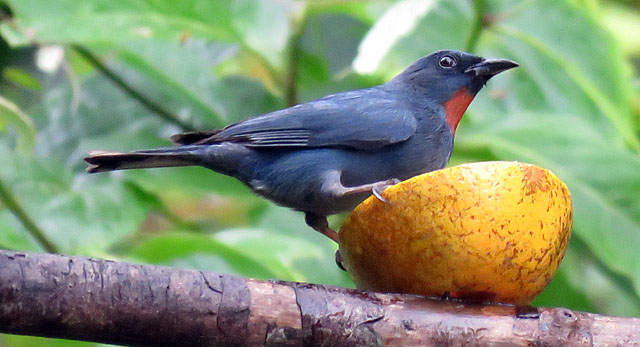
We then took an afternoon drive to the Black River Upper Morass, where low levels of water and overgrown marshes were not promising for big numbers of birds, but we lucked into quality. After seeing Limpkin, Least Bittern, and Purple Gallinule, timing was just right for a response from a Spotted Rail that walked out into the open. We ended up seeing three birds from this location!
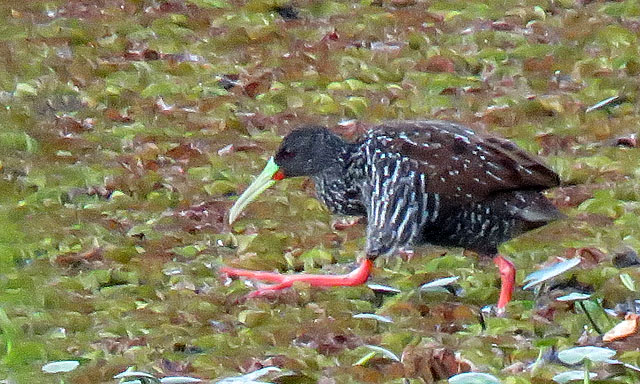
Then just down the road was a slightly different patch of vegetation, and a quick attempt for Yellow-breasted Crake resulted in a vocal response. Before long we were watching two of them walking through the sedges, eventfully to emerge out in the open and walk several yards across totally open marsh to perch on a small log.
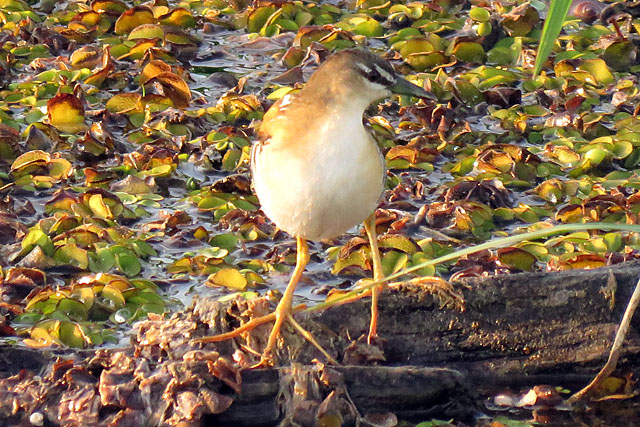
If that weren’t enough, after dinner back at Marshall’s Pen we got views of a Northern Potoo flying over us twice, finally seeing a second one perched through many branches. But then just a few feet away we noticed a Jamaican Owl hunting silently from a fence post, completely unperturbed by our close presence.
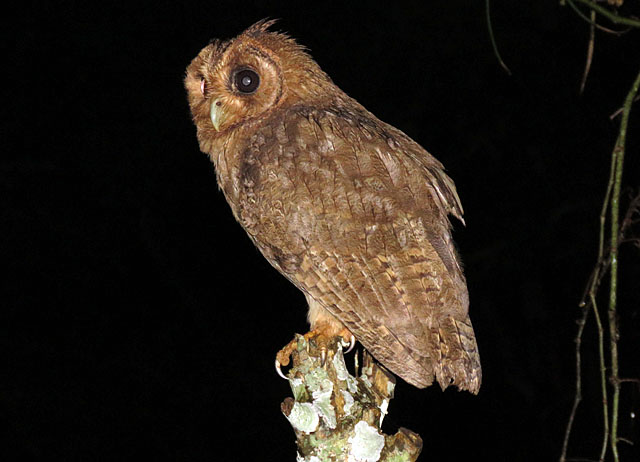
If the birds weren’t enough, we had beetles, millipedes, snails, lizards, and butterflies to look at. One evening in the mountains the moths were particularly good, one of the prizes being the endemic and seldom witnessed Jamaican Furry-legs, Acraga ciliata.
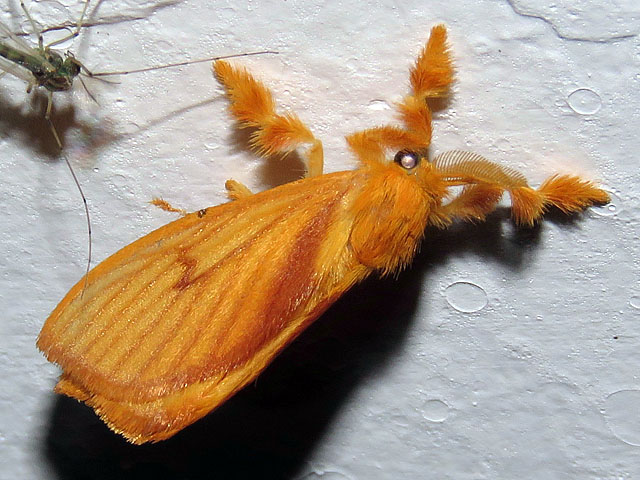
We birded our final day of the tour in the Cockpit Country, seeing our last endemic species in the form of a perched Yellow-billed Parrot. We also heard Plain Pigeon (and two that flew over in a split second were likely also this endemic subspecies), and then the aforementioned Rufous-throated Solitaire completed the entire list of endemic species and subspecies currently known to occur on the island, one of the few times we’ve done that. So we walked on slowly, saw some nice butterflies, and took time to enjoy the flowers and other endemic plants, such as this Jamaican Schlegelia, Schlegelia parasitica, a little-known plant of the limestone hills.
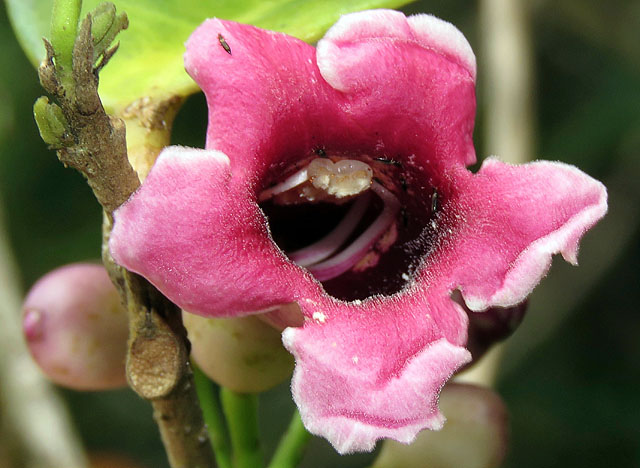
March 7:
Rich Hoyer on his just-completed tour, Mexico: Baja California's Cape Region
This year’s Baja California tour was highlighted by lots of birds everywhere and delightfully pleasant weather, providing a perfect escape from the wintry climate dominating our homes up north. Both hummingbird species received top votes for favorite bird, as we had exceptional views on our last morning of a male Costa’s with his shining lavender helmet, and the endemic and gorgeous Xantus’s, below, was particularly confiding this year in several locations.
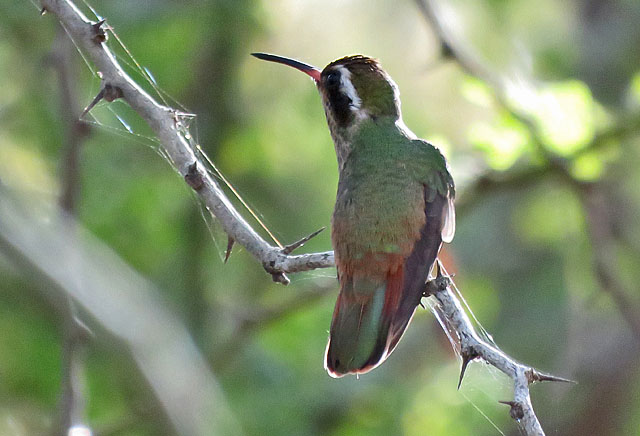
Belding’s Yellowthroat and Gray Thrasher were two more regional endemics getting high votes, the latter seen on multiple days and extraordinarily well. One morning, a pair fed on the shoulder of a back road through the desert while we watched from within the van just a few feet away.
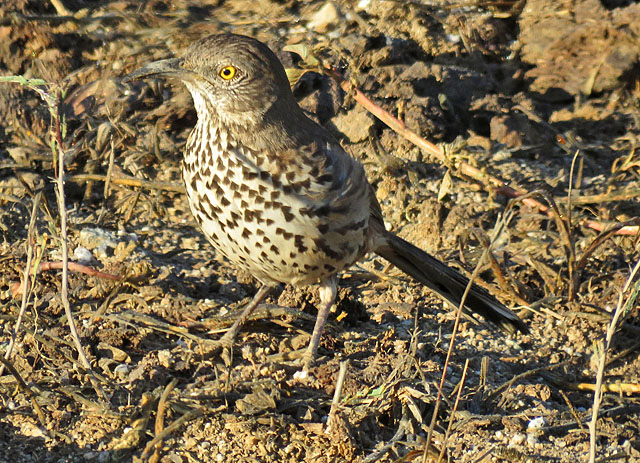
Our wonderful experience with a pair of “Mangrove” Yellow Warblers was hard to beat, and so even this more widespread species received a number of votes.
The relaxed pace of the tour allowed us to do a bit of exploring, birding a reservoir and a marsh that locals told us about, and stopping to admire the plant life, such as this Desert Unicorn Plant, Proboscidea althaeifolia.
We also saw some endemic reptiles, such as a water snake, a turtle, and two lizards, and turning a bit of trash in the desert near Puerto San Carlos revealed an endemic hairy scorpion, Hadrurus concolorous.
We spent a full morning hiking to higher elevations in search of the Sierra de la Laguna specialties, and seeing one and hearing three more “Cape” Northern Pygmy-Owls was a highlight.
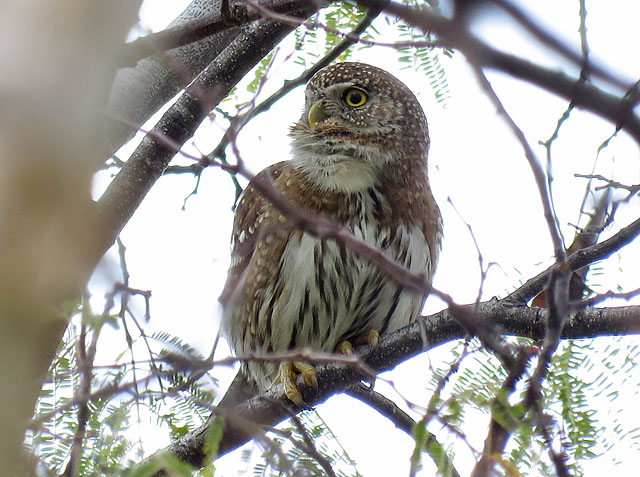
An unusually large concentration of over 20 Crested Caracaras along one highway demanded an impromptu stop for an irresistible photo op.
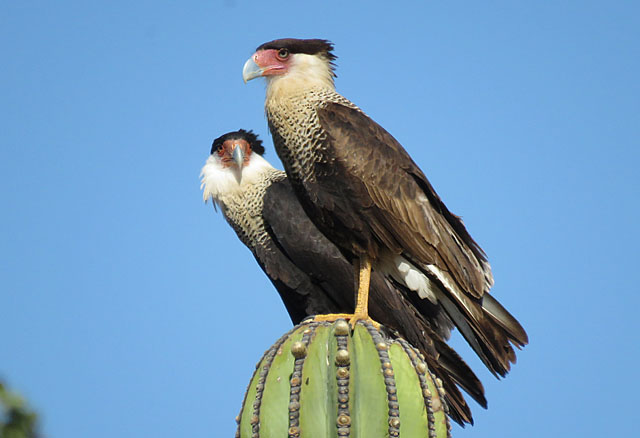
The boat trip on Magdalena Bay was more challenging than usual, thanks to a third consecutive day of unusually persistent north winds, but the numbers of birds and fabulous desert scenery made it worth while.
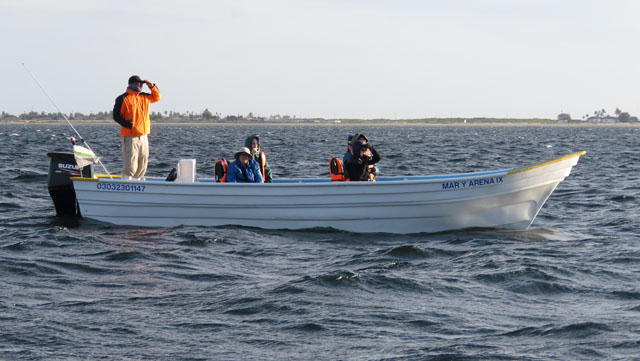
And of course we had enjoyable views of several Gray Whales – perhaps up to 20 around us over the course of an hour, with one spy-hopping at very close range and another doing a double breach, allowing for a lucky photo.
February 26:
Paul Holt from his ongoing tour, India: Ranthambhore, Bharatpur, Nainital and Corbett
It took us nine game drives, six at Ranthambhore and three in Corbett National Park, before we connected with our first Tiger, but wow..., did we connect. Four encounters with the same female and virtually fully grown cub followed by great looks at a massive male. Awesome! We'd invested at lot of ttime in the search but had seen some great other things along the way - Painted Spurfowl and Painted Sandgrouse, Indian Courser and Indian Skimmer as well as Brook's Leaf & Smoky Warblers to mention just a few. We're now searching out some of the avian delights that the hill station of Nainitalwas has to offer...
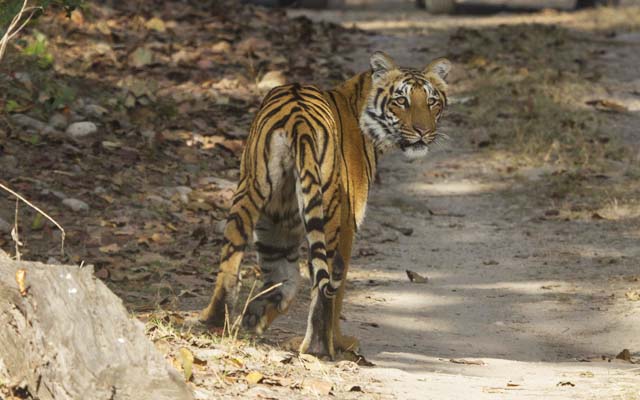
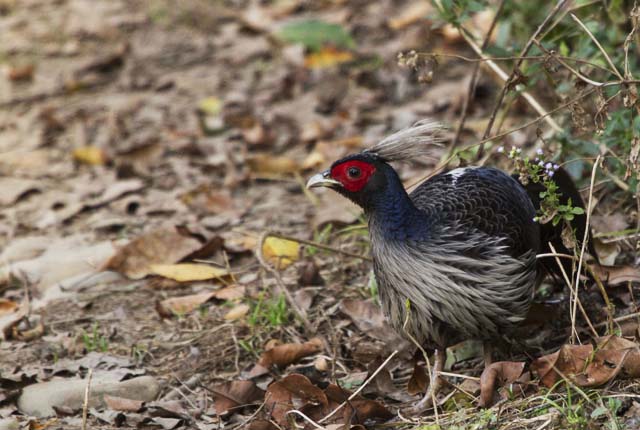
Kalij Pheasant, the required, stunning bird for any from-the-field
February 26:
Jake Mohlmann on his recently completed tour, Texas: The Rio Grande Valley
South Texas thrilled us during our week in this tropical paradise...but it was anything but tropical as the coldest winter in the last 10 years held the valley in its grasp. It didn’t seem to bother the birds too much, although Mexican strays were in short supply, and we managed to cross paths with a stunning male Blue Bunting beaming in the dense undergrowth and hard to find valley specialties crossed our paths in several places such as Red-billed Pigeons at Chapeño, White-collared Seedeaters at Salineño, and Aplomado Falcons in the coastal flats.
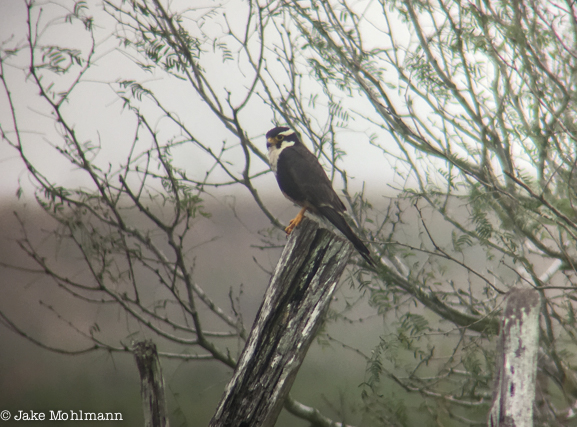
Aplomado Falcon perched for close inspection
Hummingbirds stole the show some days. An amazing 6 species were seen throughout the week including Black-chinned, Ruby-throated, the regional specialty Buff-bellied, Rufous, a banded male Allen’s Hummingbird and most surprising of all a wayward Broad-tailed Hummingbird.
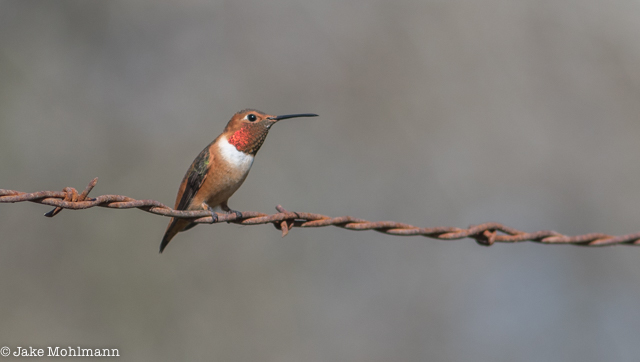
A banded Allen’s Hummingbird confirmed its ID
Red-tailed and Harris’s Hawks vied for the highest raptor total some days. At one point we witnessed 7 Harris’s Hawks perched in close proximity choosing to roost together, an anomaly in the raptor world. Though several species of Parrots occurred we took our time to get great looks at the ‘countable’ ones. A flock of nearly 500 Green Parakeets screamed over our heads as they would reposition for the best spots on the power lines. Red-crowned Parrots were seen 2 days coming into roost trees where we enjoyed their company as the sun set.
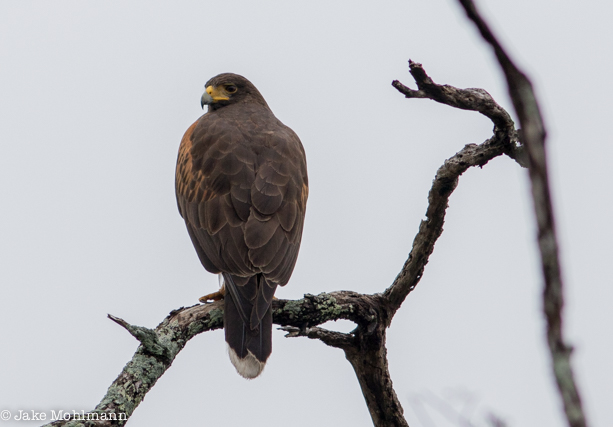
A Harris’s Hawk done for the day
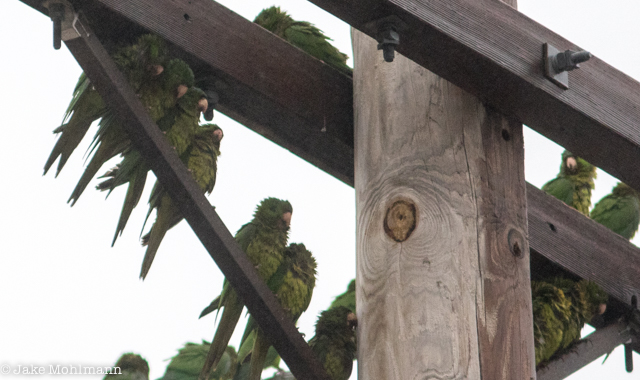
Green Parakeets huddled together for warmth
Valley specialties were abundant at several of the protected areas. Least Grebes chattered to each other in the vegetated wetlands and Olive Sparrows, normally difficult to spot, showed well throughout the week. Green Jays, Altamira and Audubon’s Orioles, and White-tipped Doves were always around and available to watch when nothing else was in view.
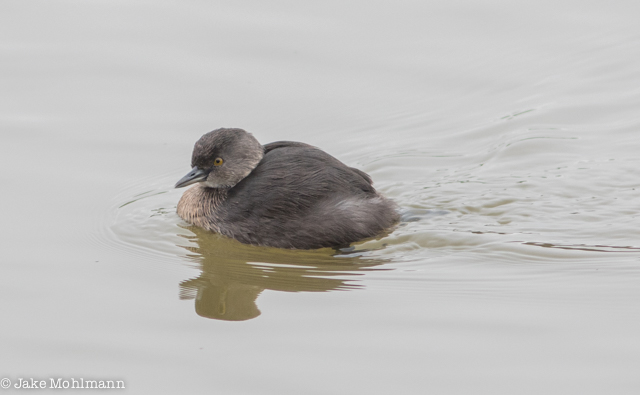
The diminutive Least Grebe has a big personality
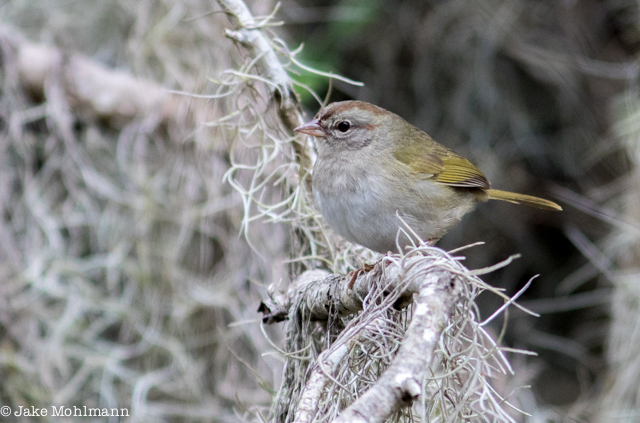
Olive Sparrow oddly perched in the open
The drier Chihuahuan Desert portion of the tour focused above and below Falcon Reservoir near Zapata. Species much more common further west joined our tally including the raucous song of a singing Cactus Wrens, harsh scolds of foraging Black-tailed Gnatcatcher, and the always entertaining antics of the Greater Roadrunner methodically searching for prey.
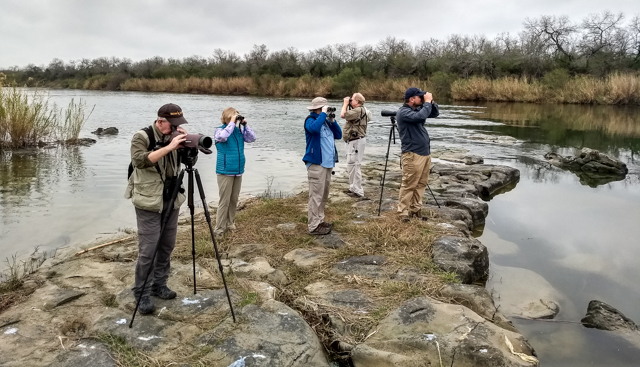
Scanning the Rio Grande produced many birds
Our extension brought us to the Aransas National Wildlife Refuge where over half of the world’s population of Whooping Cranes spend the winter looking for Blue Crabs. An astounding 50 of these huge birds were counted on our boat trip through the calm waters. We even got to witness some dancing between a pair as they showed their young how to bust a move.
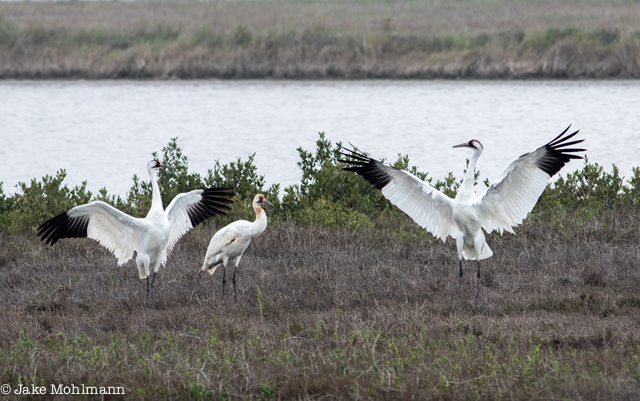
A Whooping Crane pair practices dance moves
And as always, thanks to our wonderful group for companionship and fun
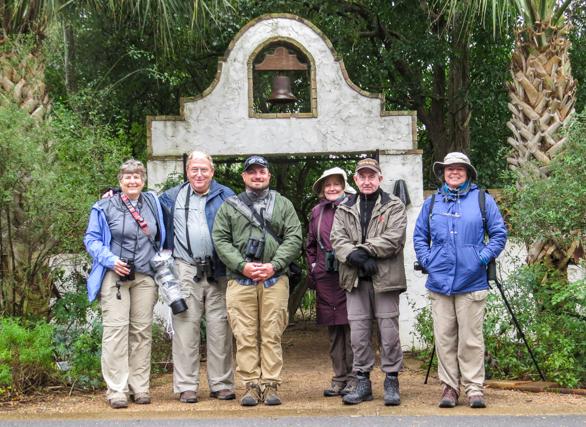
Our group, excited after seeing Blue Bunting
February 21:
Fabrice Schmitt on his and Gavin Bieber's just-completed cruise, Buenos Aires to Santiago - Birding Sea and Land
Our fifth cruise around the Horn ended a few days ago, and once again it was wonderful. On what other trip can you see both giants, Wandering Albatross and Andean Condor, or alternate days at sea with thousands of seabirds, with days on land looking for skulking tapaculos, Lesser Rheas or charismatic penguins? Birds aside, we visited four countries, navigated on two oceans, and sailed to legendary places such as Cap Horn and the Magellanic Strait all without having to change rooms!
Just naming the voted 10 ‘best birds’ gives a sense of the diversity encountered on the trip: the colorful King Penguin had the most attention and won the vote followed by the impressive Wandering Albatross, the unique Magellanic Plover alone in its avian family, the huge Andean Condor surprising us in the Patagonian steppe, the hundreds of Southern Royal Albatross, the elusive Black-throated Huet-huet even if two of them gave us a great show, the recently described Pincoya Storm-Petrel found on the ship and released safely, the impressively long-tailed DesMur’s Wiretail, and tied for ninth, the elegant White Woodpecker and Thorn-tailed Rayadito. In addition to all the wonderful birds we also had several groups of dolphins, and no less than five species of whale.
King Penguins in the Falklands, voted as 'Bird of the trip'
The impressive Southern Royal Albatross, seen most seabirding days
Andean Condor, another giant bird, seen in Patagonia
During our days on land we looked for the local species such as Magellanic Plover (right) together with Two-banded Plover (rear) and White-rumped Sandpiper...
...and that (usually) skulking Black-throated Huet-huet
At sea we had amazing seabirding days, finding great birds like Stejneger's Petrel...
...or groups of Peale Dolphins
We even found a Pincoya Storm-Petrel on the ship that we released safely
The landscapes were stunning too, like the South American Sea-Lion colony in the Valdes Peninsula...
...or the view of the Cap Horn lighthouse and memorial...
...or the impressive sunrise in the Chilean channel
February 20:
Jake Mohlmann on his recent tour, Argentina: The South - Pampas, Patagonia and Tierra del Fuego
We were fortunate to cross paths with 258 species of birds and 14 different mammal on our exploration of southern Argentina's vast wetlands, deserted steppes, and southern Beech forests. We spent our first few days exploring the verdant grasslands east of Buenos Aires where lots of birds were breeding. The reeds included Curve-billed Reedhaunters, Stripe-backed Bittern, and one of the most wanted birds on the tour, Many-colored Rush Tyrant. One grassy back road near La Corvina produced the regional Hudson’s Canastero, a family of Bay-capped Wren Spinetails, and for my first time on this tour a male Bearded Tachuri.
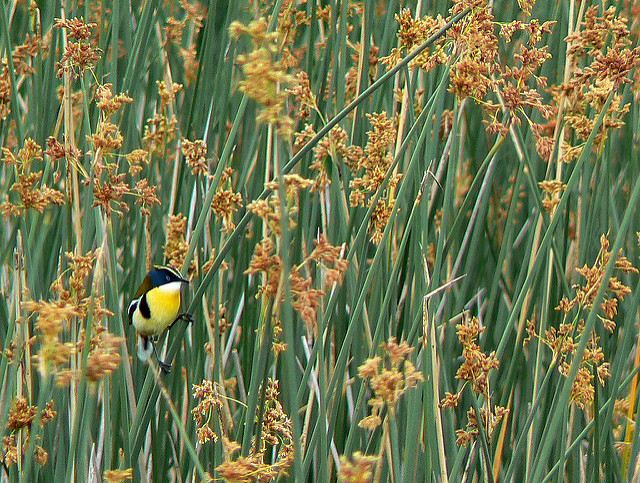
One of the most wanted birds, Many-colored Rush Tyrant
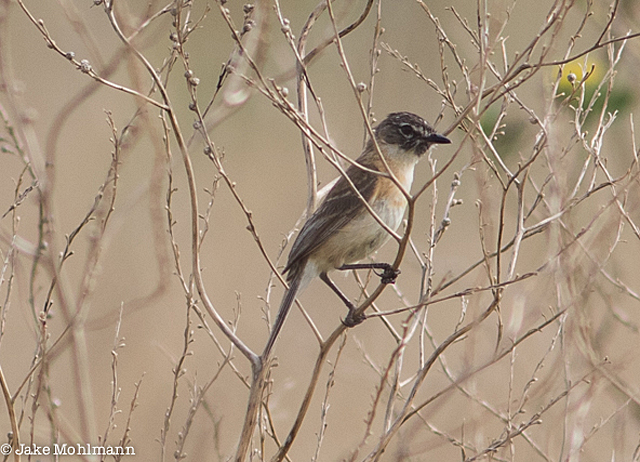
A male Bearded Tachuri was a welcome surprise!
Overlooking Punta Delgada we sat high on top of a sand dune cliffside towering 200 feet over the plentiful Southern Sea Lions and Southern Elephant Seals all resting on the beach, some with recently born young. Southern Giant Petrels fought over recent afterbirths and Snowy Sheathbills added white to an otherwise brown canvas. Over 130 Elegant Crested Tinamous were tallied on our drive around the Valdez Peninsula and the Gray-bellied ShrikeTyrants, Darwin’s Nothuras, and numerous Lesser Rheas weren’t bad either.
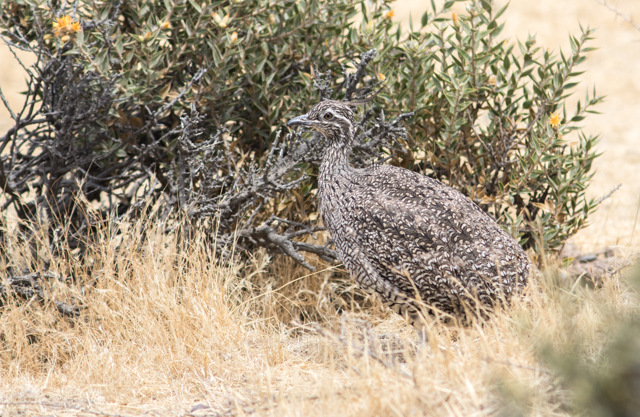
Elegant Crested Tinamou
The ‘Land of Fire’ at the end of the world awaited us with its beautiful scenery and amazing bird life. On the boat trip down the Beagle Channelm accompanied by Black-browed Albatrosses, seething breeding colonies of Imperial and Magellanic Cormorants were side-by-side and the sizeable Magellanic Penguin Colony had dozens of nesting Gentoo Penguins, and even more exciting, a regal King Penguin. Wonderful days were spent exploring Tierra del Fuego National Park where Magellanic Woodpecker and Spectacled Duck were gawked over. Outside of Ushuaia we also hiked up above tree line to see foraging Ground Tyrants and colorful Yellow Bridled Finches.
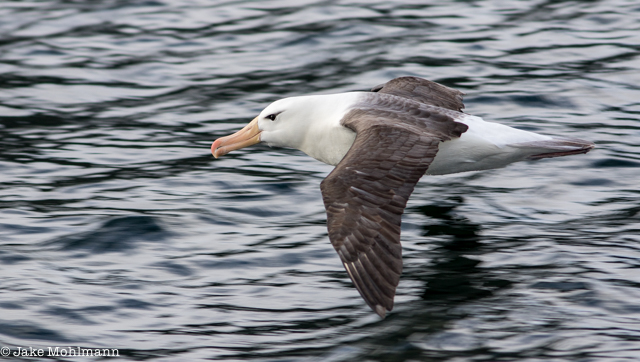
A Black-browed Albatross courses close to the boat
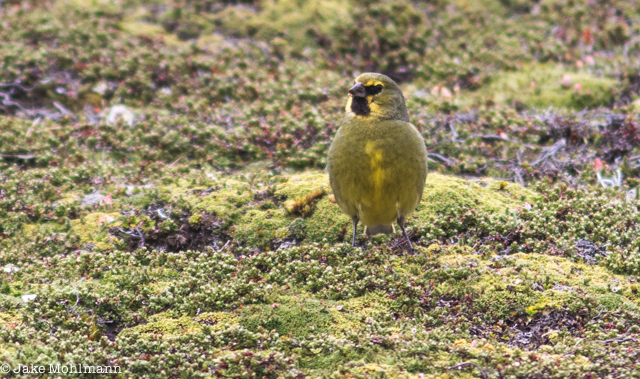
Yellow-bridled Finch foraging amongst cushion plants
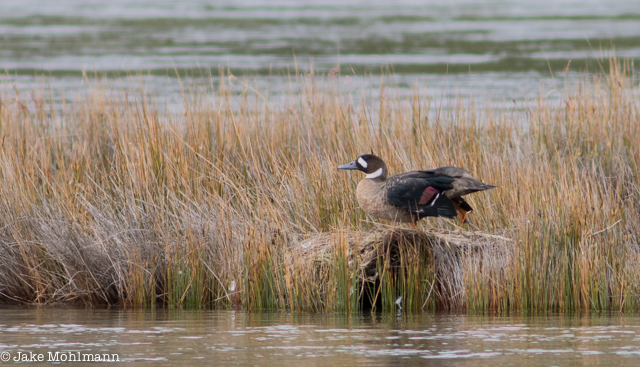
A Spectacled Duck reveals its speculum
The weather ended up being perfect throughout the entire trip and our group was particularly congenial. This all made my job even easier and I’ll keep my fingers crossed in hopes that every year's tour is as good as this one.
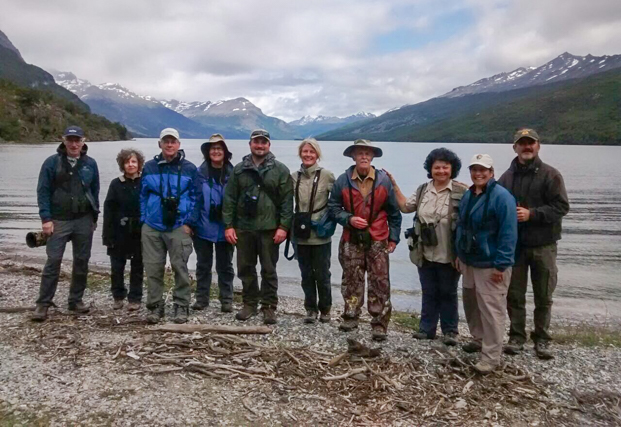
Our delighted group in the scenic Tierra del Fuego National Park
February 15:
Frank Nicoletti on his just completed tour, Minnesota in Winter
The expansive bog lands, boreal forests, and Lake Superior shorelines of Duluth, MN, and environs offer a uniquely accessible opportunity to see specialty birds of the northern climes in winter. Our group bundled up appropriately for the weather, and we enjoyed memorable encounters with many of the birds that make winter in the north so enticing to birders. Black-backed Woodpecker and Three-toed Woodpecker were found among the branches. We were able to study the plumages and calls of Pine Grosbeak and Evening Grosbeak while watching them through the spotting scope in their natural habitat; always a treat! The spectacle of Great Gray and Northern Hawk Owls hunting voles was exciting and we spent quite a bit of time watching them hunt and eat. A Boreal Owl was found warming up in the sun, and a Snowy Owl spotted with a freshly caught muskrat. A few Sharp-tailed Grouse were spotted, too! In all, we encountered 45 species of birds and 6 species of mammals on our travels through Northeastern Minnesota and Northwestern Wisconsin.

Our bundled group
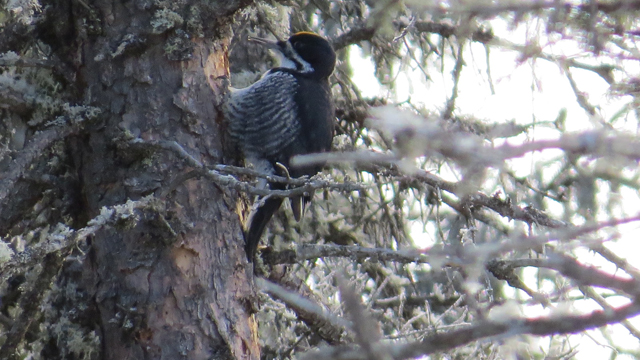
Black-backed Woodpecker
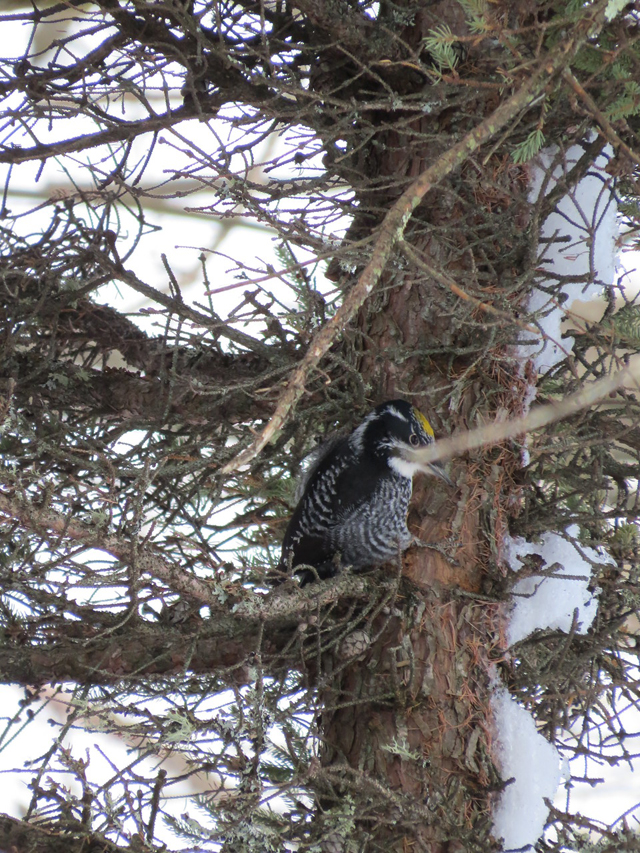
American Three-toed Woodpecker
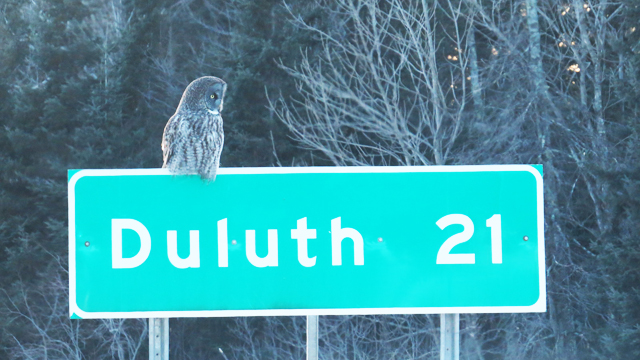
A Great Gray Owl hoping to catch a ride to Duluth
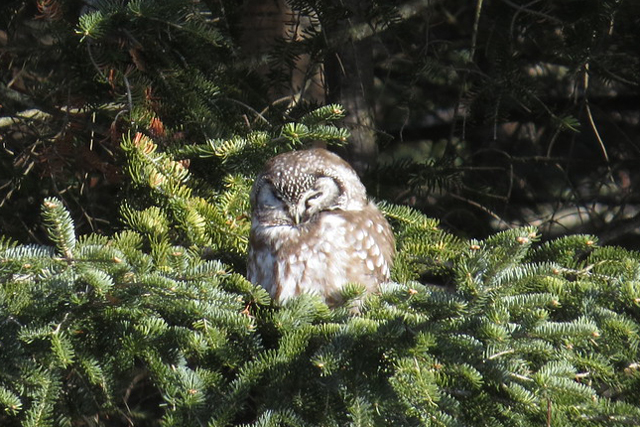
Even Boreal Owls will take advantage of the sun on cold winter days
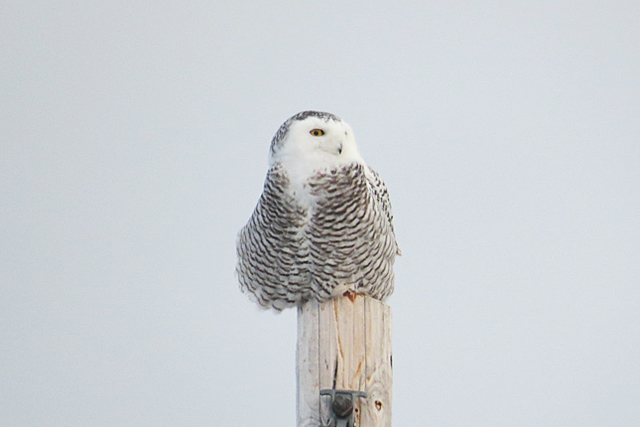
Snowy Owl
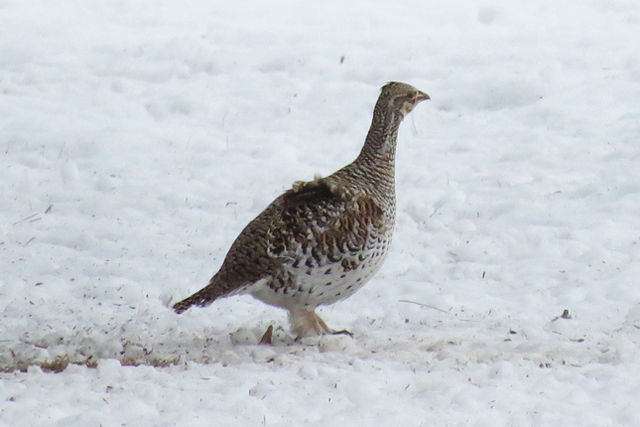
Sharp-tailed Grouse
February 14:
Rich Hoyer on his just-completed tour, Peru: The Cloud Forests of the Rio Mayo and Abra Patricia
Birding for ten days in Northern Peru during the rainy season was delightful – and it barely rained. Walking through tunnels of moss-, lichen-, fern-, and orchid-laden trees in a stunning landscape of forest-covered ridges elicited wonder during our birding outings even when we weren’t busy looking for one amazing bird after the next. We finally had a few hours of morning showers on our next-to-last day, but other than that we had to force ourselves to take time off from trail birding to sit and watch the hummingbird feeders. We saw and heard nearly 400 species of birds, over 11% of which were hummingbirds.
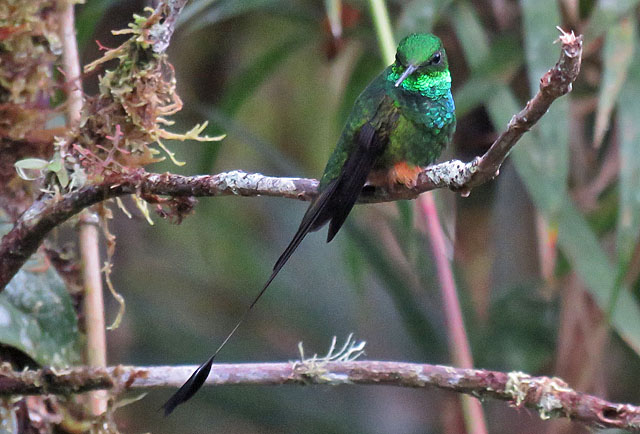
No one ever tired of seeing the delightful Booted Racket-tails.
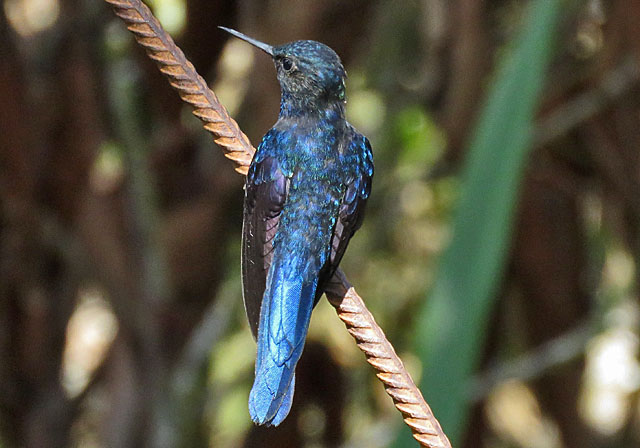
Never a guarantee on the tour, the drop-dead gorgeous Royal Sunangel was surprisingly common at the Fundo Alto Nieva feeders this year.
Among the birds voted favorite were many wrens, and this is perhaps the best place to hear an amazing variety of some of the most beautiful songs in the family. Gray-breasted and Bar-winged Wood-Wrens, Chestnut-breasted, and Sharpe’s Wrens serenaded us nearly every day, while on our last morning a Scaly-breasted Wren topped the list. You can listen to the songs of Chestnut-breasted and Sharpe's Wrens here and here. and Also making the short list of favorites were a Fiery-throated Fruiteater on our last morning and a pair of rare (but increasing) Southern Lapwings, hidden in a flock of Comb Ducks and Black-bellied Whistling-Ducks on our very last birding stop.
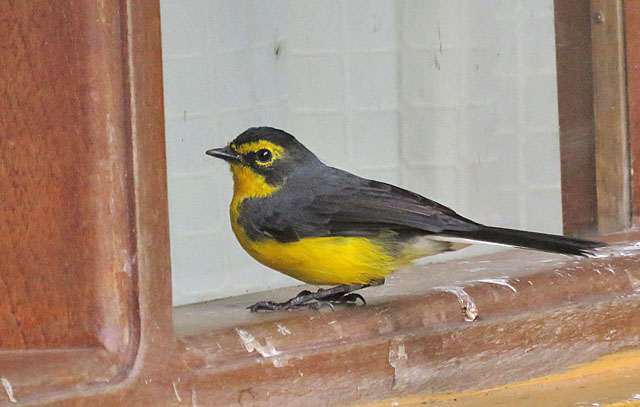
Other birds voted favorites included this Spectacled Redstart which made the rounds by all our rooms at the Owlet Lodge every day, singing his accelerating song and fighting his reflection in our bedroom windows just inches away.
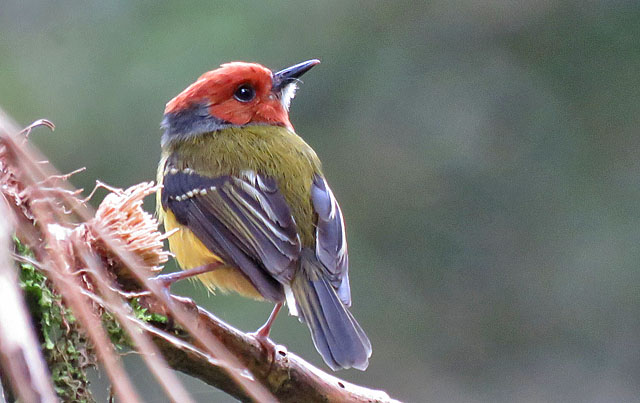
One of the most range-limited and charismatic birds of the tour is the Johnson's Tody-Tyrant, never failing to make it to the list of favorites.
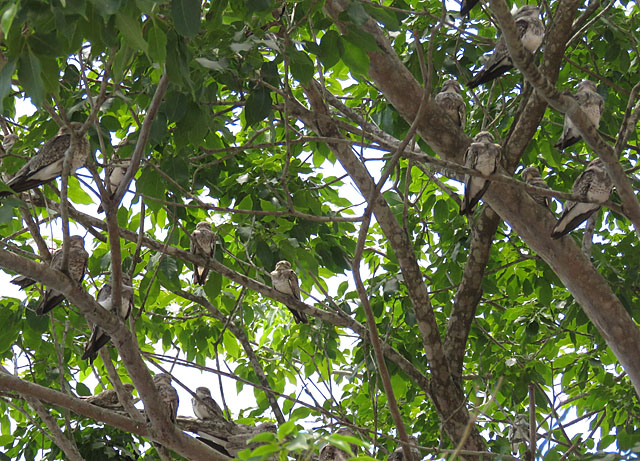
Nightbirds seen during the day were especially memorable. A quick stop at a gas station in the middle of a small town resulted in the surprising discovery of a roost of Sand-colored Nighthawks a good half mile from the river islands where they would have been more expected.
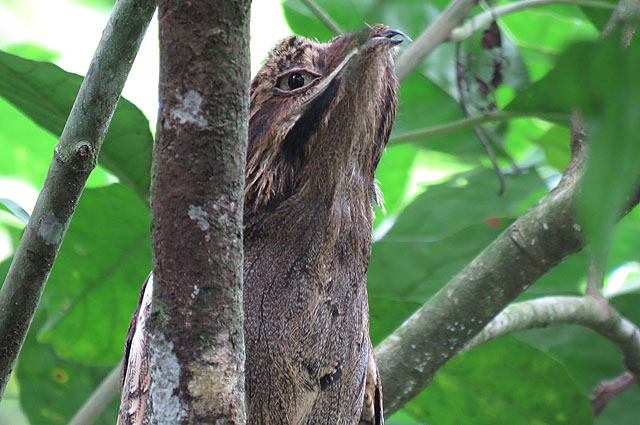
A Long-tailed Potoo on a day roost was a great find by Hilder at the Koepcke’s Hermit feeding station. It has about four favorite roosts, but this morning he found it in a new place, surprisingly difficult to see.
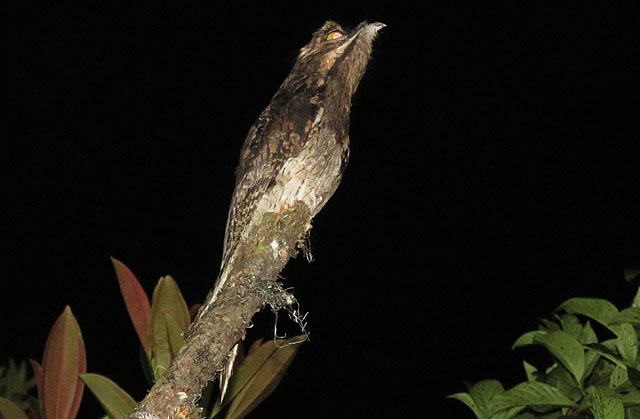
On the night we finally connected with a Long-whiskered Owlet, we were surprised by this Common Potoo on a feeding perch right next to the trail – at the uppermost limit of its elevational range, having us wishfully thinking Andean Potoo at first.
The mammals, insects, and plants were also outstanding, an unexpected highlight for some. One request to see a Starry Night Cracker was fulfilled before lunch on our first day.
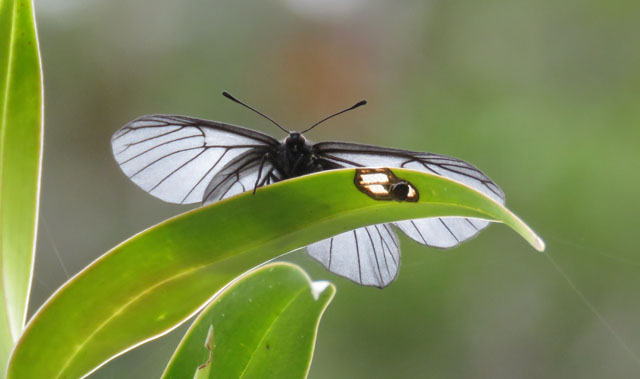
The most amazing butterfly, if not fanciest or the most colorful, was the enigmatic Styx infernalis, placed its very own tribe and very rarely seen, this one for the first time on any WINGS tour.
The moths at the Owlet Lodge got better each evening, the diversity of species, forms, and shapes mind-boggling, and some quite lovely. This Pityeja histrionaria caught everyone’s eye.
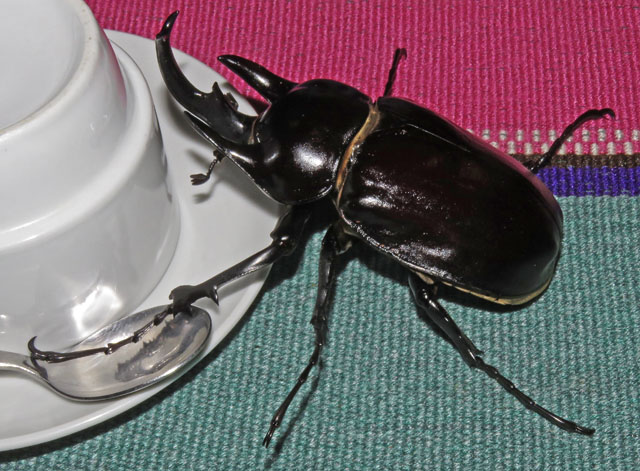
Other insects made the tour very memorable, such as the truly enormous elephant beetle Megasoma actaeon that flew into the lamps at one early morning breakfast and landed with a huge whack in the middle of the table.
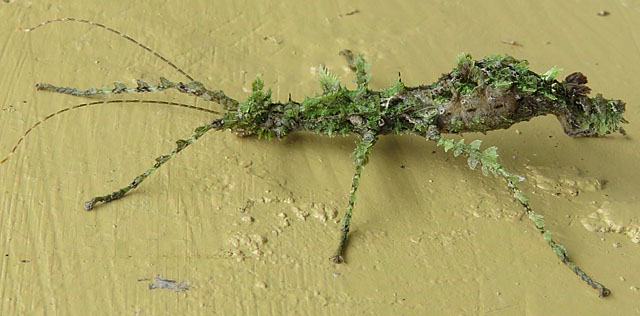
This mossy stick insect exemplifies the amazing adaption so many insects have to the cool, mossy forests of the higher elevations.
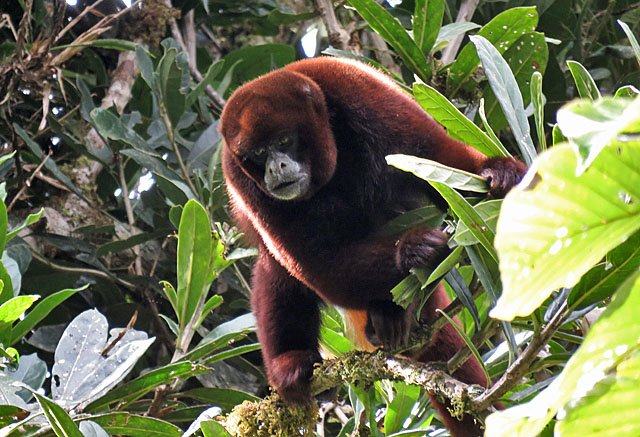
We were incredibly lucky to stumble into a small troop of the highly endangered Yellow-tailed Woolly Monkey on one afternoon hike, and we spent many minutes watching them eat leaves, fruits, and lap up copious amounts of nectar from a showy blooming tree with chalice-like flowers.
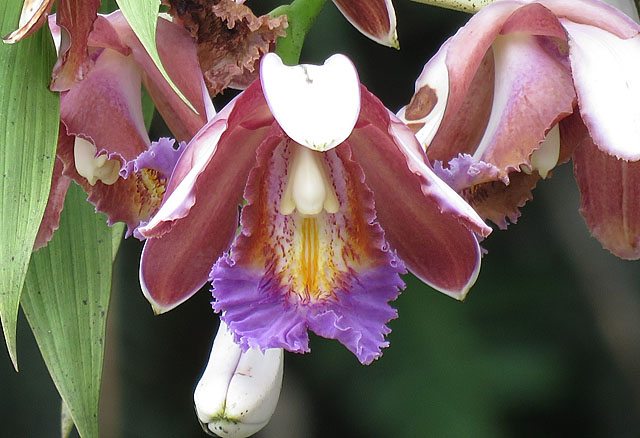
The orchids weren’t as abundant as in some years, perhaps because of the drier weather, but this Sobralia caloglossa hanging over the road (where we had just seen a pair of soaring Black-and-chestnut Eagles) was a show-stopper.
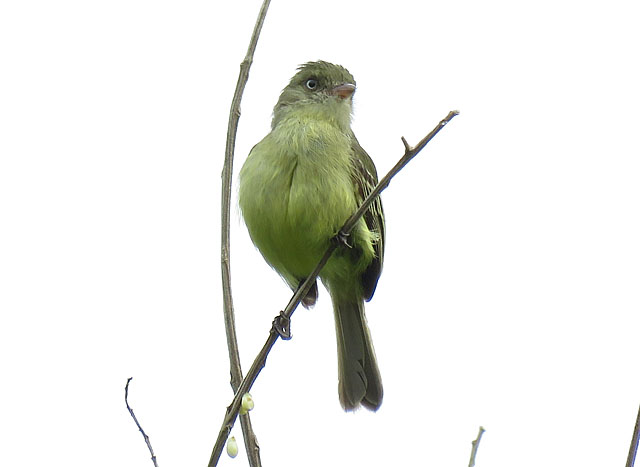
We kept adding very special birds up to the last minute. At Waqanki we saw the rare Sooty-headed Tyrannulet, followed by pair of this Mishana Tyrannulet right by the hummingbird feeders.
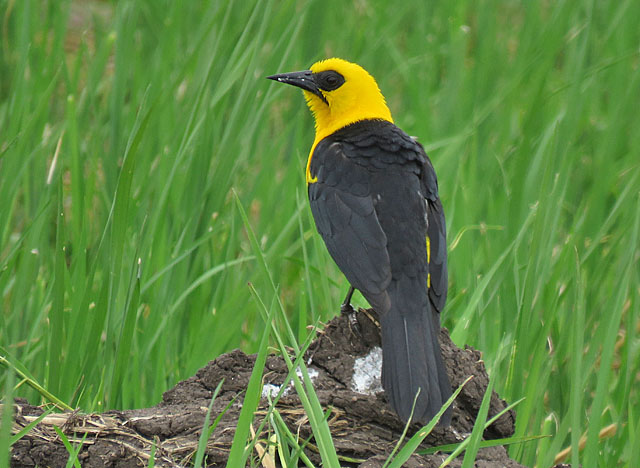
Finally, at our last stop, we paused on our way to the Tarapoto airport to admire this gorgeous Oriole Blackbird.
February 11:
Jon Feenstra on his just-completed tour, Ecuador: Mindo and the Northwest Andes
We just finished a week of wet season birding on the Pacific slope of the Andes around Mindo. We didn’t have a lot of blue skies, but we did see a lot of blue birds… and yellow ones, and red ones, and green ones, and various combinations of those colors and more. We found nearly three hundred species including 35 species of hummingbirds and 33 species with “tanager” in their names. Pretty orchids, colorful lizards, and great big beetles all added to the good time.
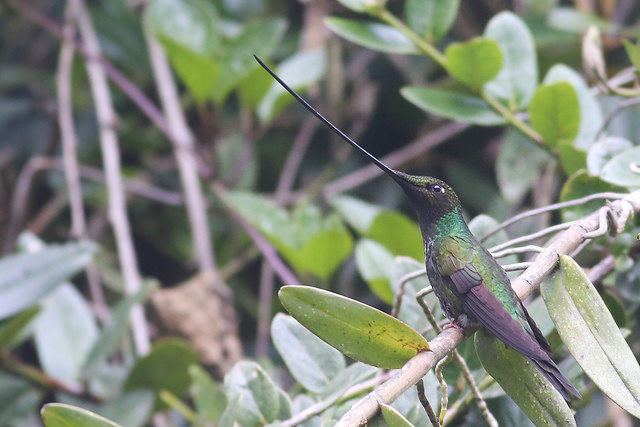
The insanely proportioned Sword-billed Hummingbird was one of the regulars at the high elevation reserve of Yanacocha. It perches with its bill held vertical perhaps to avoid tipping over.
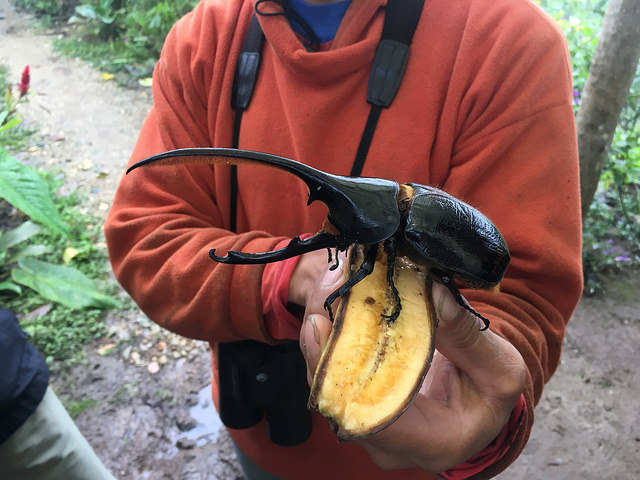
This rhinoceros beetle was bigger than many of the birds we saw.
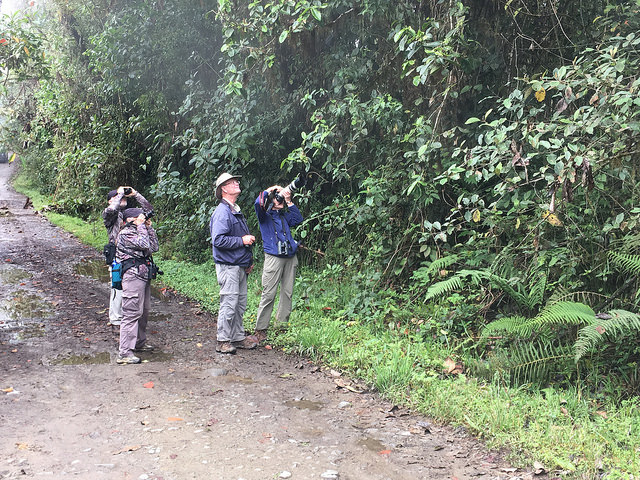
With new highways, the old and disused mountain roads made getting into the thick forest hardly a problem.
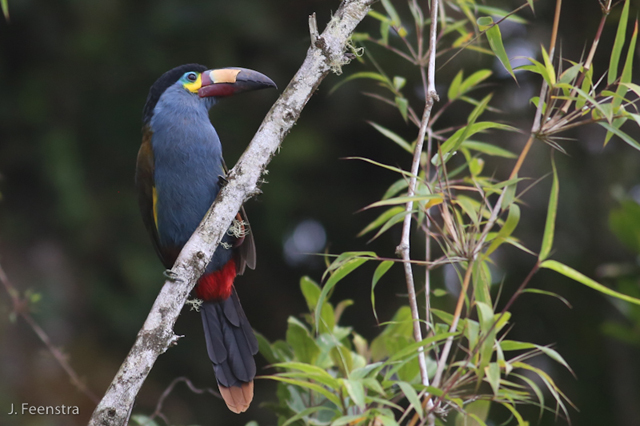
We saw multiple multi-colored Plate-billed Mountain-Toucans in the expansive cloud forest reserves around Mindo.
February 6:
Jake Mohlmann on his recently completed tour, Arizona: A Winter Week in the Southeast
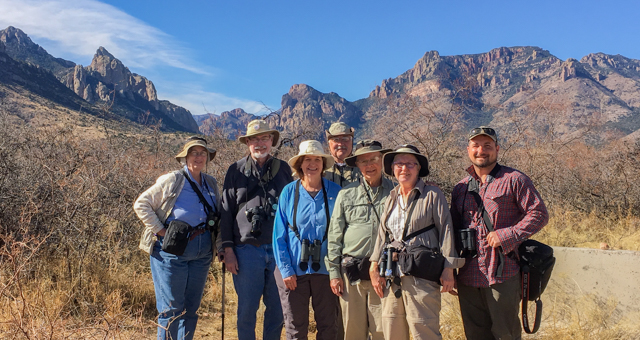
Our group at the mouth of Cave Creek Canyon
We just wrapped up another Winter Week in Arizona tour filled with beautiful scenery and abundant wildlife. This year 156 species of birds were encountered, as well as 10 mammal species. Every day of our tour explored a unique area of southeast Arizona, each worthy of day’s exploration. The Santa Cruz River Valley with its lush riparian zone and flowing surface water yielded Sage Thrasher, Mountain Bluebird, Red-naped Sapsuckers and perhaps most surprising of all a very rare Sinaloa Wren.
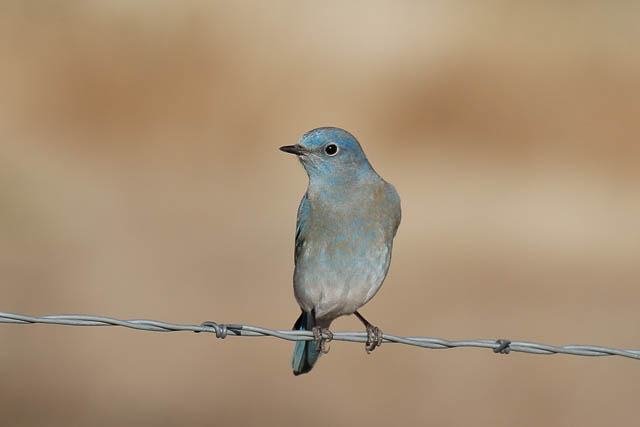
The graceful, lovely Mountain Bluebird
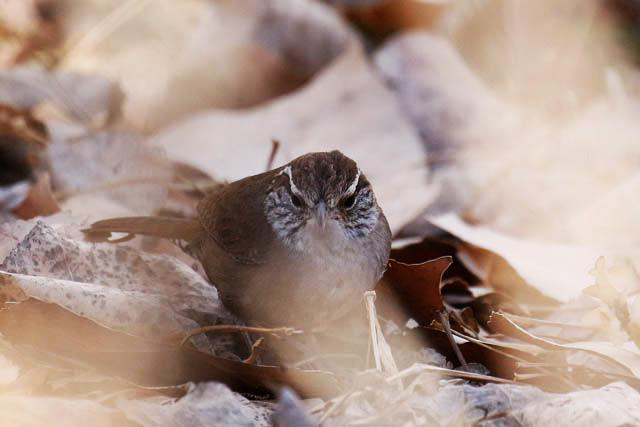
A Sinaloa Wren was the great surprise
The vast grasslands of Las Cienegas National Conservation area produced several highly sought after specialties such as Baird’s Sparrow, dozens of Chestnut-collared Longspurs and even a rare McCown’s Longspur.
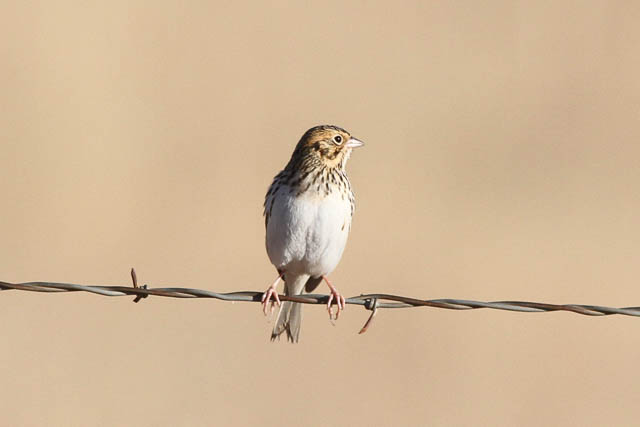
The sought after Baird's Sparrow
Over 12,000 Sandhill Cranes were seen as they came in to Whitewater Draw Wildlife Management Area in waves. Several other species of interest were in the wetlands here including Swamp Sparrow, Marsh Wren, and an initially reluctant Virginia’s Rail. The bushy side roads of this region also hosted Sagebrush Sparrow for some, and the regional Bendire’s Thrasher for all. The Sulphur Springs Valley’s raptor show did not disappoint and we were excited to find both Ferruginous and Harris’s Hawks in close succession.
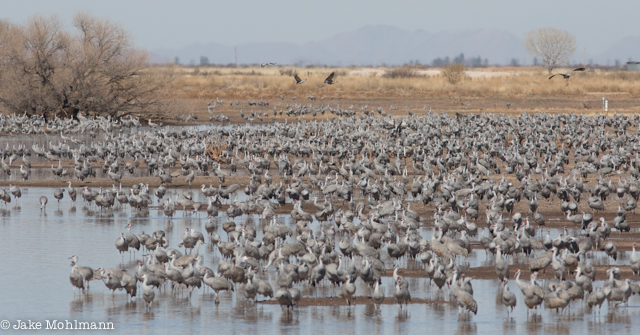
Thousands of Sandhill Cranes roost in the Sulphur Springs Valley
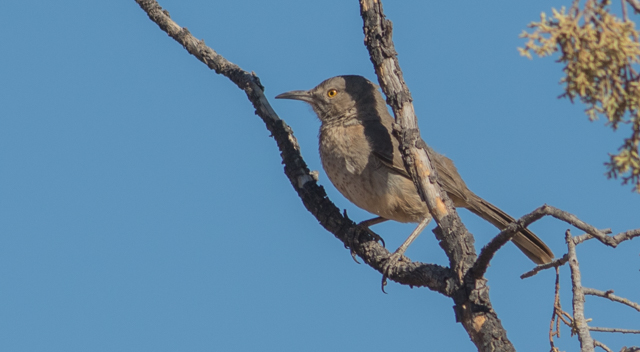
A curious Bendire's Thrasher perched up nicely
Portal is a must-see for anyone visiting this region of Arizona and can be quite productive any time of year. This year scope views of Crissal Thrasher and Woodhouse’s Scrub-Jay were relished. The hummingbird show was top notch and we got to enjoy both male and female Rivoli’s and Blue-throated Hummingbirds coming to feeders. Cassin’s Finches were present in higher numbers than usual. In the upper reaches of the Chiricahua Mountains we were successful in tracking down a few Mexican Chickadees, this being he only location to see them north of the Mexican border!
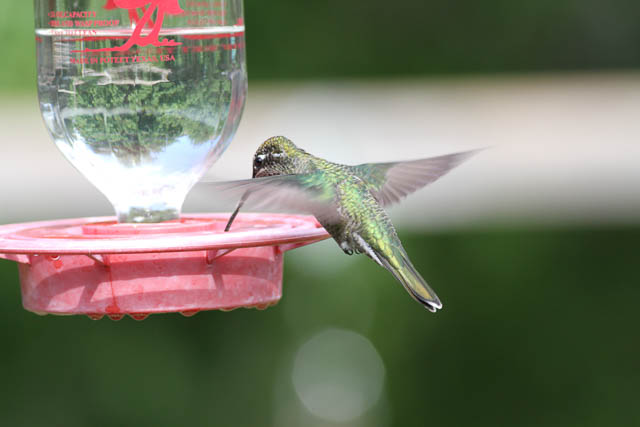
The tough Magnificent Hummingbird winters in small numbers at feeders in the the cold canyons
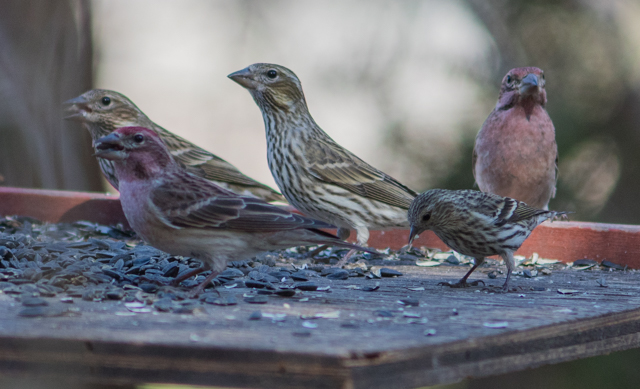
It was a good winter for Cassin's Finches, here with a Pine Siskin escort

